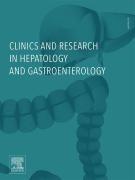Research progress on the regulatory role of different cell death pathways in metabolic-dysfunction-associated steatotic liver disease - 03/04/25
 , Mengjiao Sun a, 1, Yuanjian Ding b, 1, Xiwei Yuan a, Jingyi Lu c, Yuemin Nan a
, Mengjiao Sun a, 1, Yuanjian Ding b, 1, Xiwei Yuan a, Jingyi Lu c, Yuemin Nan aHighlights |
• | This review explores the mechanisms of various cell death pathways—apoptosis, pyroptosis, autophagy, ferroptosis, and cuproptosis—and their roles in the pathogenesis of metabolic-dysfunction-associated steatotic liver disease. It is the first comprehensive review to focus on the interplay of these cell death mechanisms in MAFLD. |
• | Diversity and Interaction of Cell Death Pathways: The review emphasizes that during the development of MASLD, multiple cell death pathways are not isolated but are interconnected, influencing the pathological progression synergistically. The article discusses how different forms of cell death, including apoptosis, pyroptosis, autophagy, ferroptosis, and cuproptosis, contribute to liver pathology through distinct molecular mechanisms, and further examines their interactions and collaborative effects. |
• | Role of Apoptosis and Pyroptosis in MASLD: This review details how hepatocyte apoptosis exacerbates inflammation, cell damage, and fibrosis during fatty liver development, focusing on mitochondrial dysfunction and oxidative stress as key drivers of apoptosis. The review also highlights the significant role of pyroptosis, particularly in liver inflammation. Studies have shown that inflammasomes such as AIM2 and NLRP3 are activated inMASLD, leading to hepatocyte pyroptosis and intensifying liver inflammation and damage. |
• | Ferroptosis and Cuproptosis in MASLD: The review further delves into the emerging roles of ferroptosis and cuproptosis as novel cell death pathways in MASLD. Ferroptosis, characterized by iron-induced lipid peroxidation, is closely linked to oxidative stress and inflammation in MASLD. Cuproptosis, a copper-dependent form of cell death, although still in the early stages of research, suggests that copper metabolism abnormalities may significantly affect liver function and contribute to cell death. |
• | Potential Therapeutic Targets and Strategies: The review also discusses therapeutic strategies targeting different cell death pathways, particularly focusing on modulating cell death mechanisms to alleviate liver injury in MASLD. For instance, inhibiting pyroptosis, ferroptosis, or enhancing autophagic function may represent key directions in mitigating the progression of MASLD, thus offering new perspectives for its treatment. |
• | Conclusion: In summary, this review highlights the critical role of cell death mechanisms in the pathogenesis of MASLD. By providing a multidimensional perspective on the different forms of cell death, this review not only enhances our understanding of the pathology of MASLD but also offers new insights into potential therapeutic strategies. Targeting specific cell death pathways to mitigate liver damage and slow the progression of MASLD holds significant promise for future treatment options. |
Abstract |
Metabolic dysfunction associated steatotic liver disease (MASLD) is one of the most common chronic liver diseases that pose a significant threat to human health. An essential process in developing various diseases, including MASLD, is programmed cell death, a regulated and controlled mechanism that eliminates damaged or unnecessary cells. It is a ubiquitous process during organismal development and represents an active, orderly form of cell death. Significant progress has been made in studying programmed cell death in the context of MASLD. This review systematically summarizes various forms of cell death, including apoptosis, Pyroptosis, autophagy, ferroptosis, and cuproptosis, along with their regulatory mechanisms in MASLD. It has been observed that there are interactions between different forms of cell death. As MASLD progresses through inflammation, fibrosis, and cirrhosis stages, multiple forms of cell death may act synergistically. This article aims to provide the latest research findings and theoretical insights to further our understanding of the pathogenesis of MASLD.
Le texte complet de cet article est disponible en PDF.Keywords : Metabolic dysfunction associated steatotic liver disease, Apoptosis, Pyroptosis, Autophagy, Ferroptosis, Cuproptosis
Plan
Vol 49 - N° 6
Article 102578- juin 2025 Retour au numéroBienvenue sur EM-consulte, la référence des professionnels de santé.
L’accès au texte intégral de cet article nécessite un abonnement.
Déjà abonné à cette revue ?

